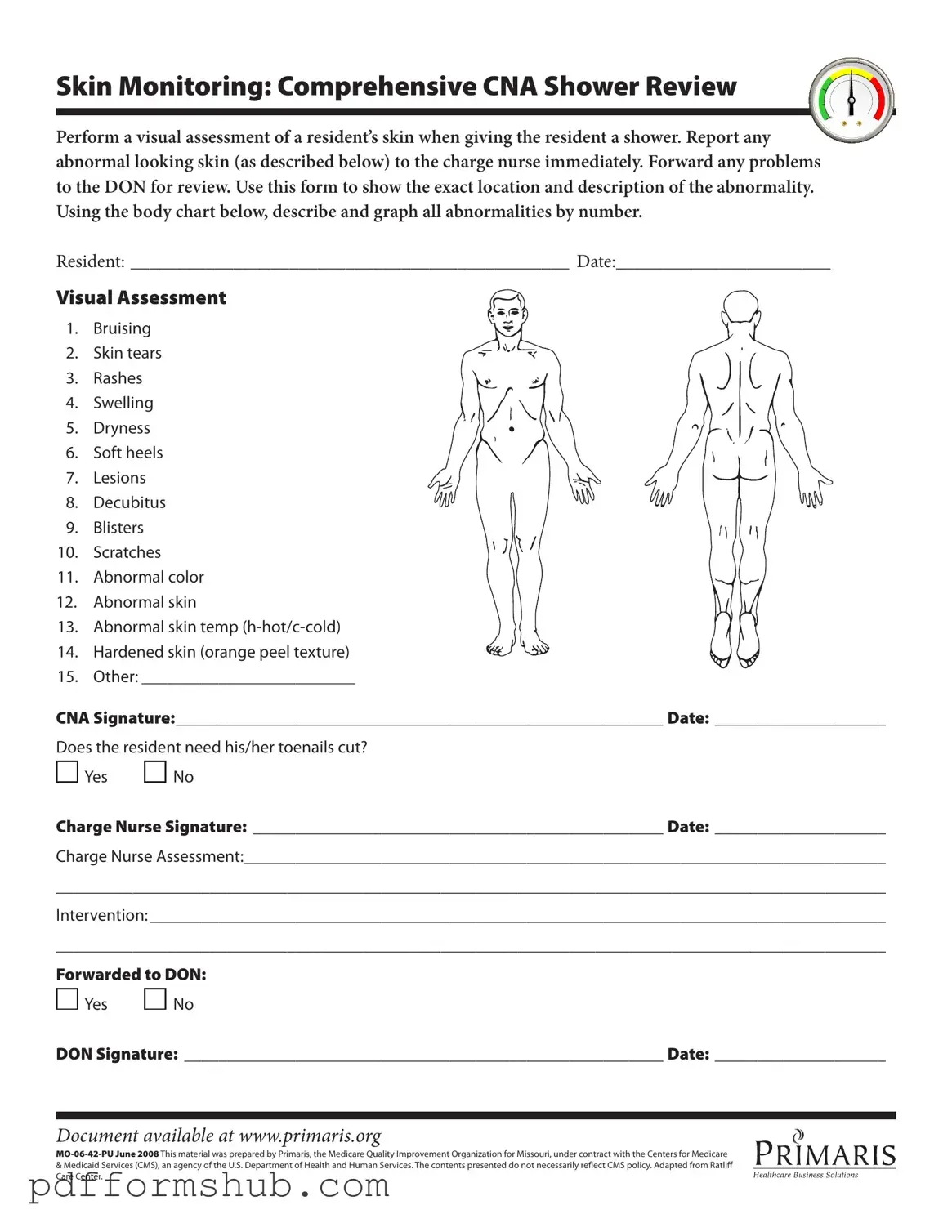The CNA Shower Sheets form is a vital tool in ensuring the health and safety of residents during bathing activities. This form is designed to facilitate a thorough visual assessment of a resident's skin while they receive a shower. It emphasizes the importance of identifying and documenting any abnormalities, such as bruising, skin tears, rashes, and other skin conditions that may require immediate attention. By utilizing a body chart included in the form, certified nursing assistants (CNAs) can accurately pinpoint and describe these issues, allowing for effective communication with the charge nurse and the Director of Nursing (DON). This process not only ensures that any concerns are promptly addressed but also promotes a culture of proactive care. Additionally, the form includes a section for assessing the need for toenail care, further contributing to the overall well-being of the resident. Each signature on the form—from the CNA to the charge nurse and DON—serves to create a comprehensive record of the resident's condition and the interventions taken, reinforcing accountability and quality care within the facility.
